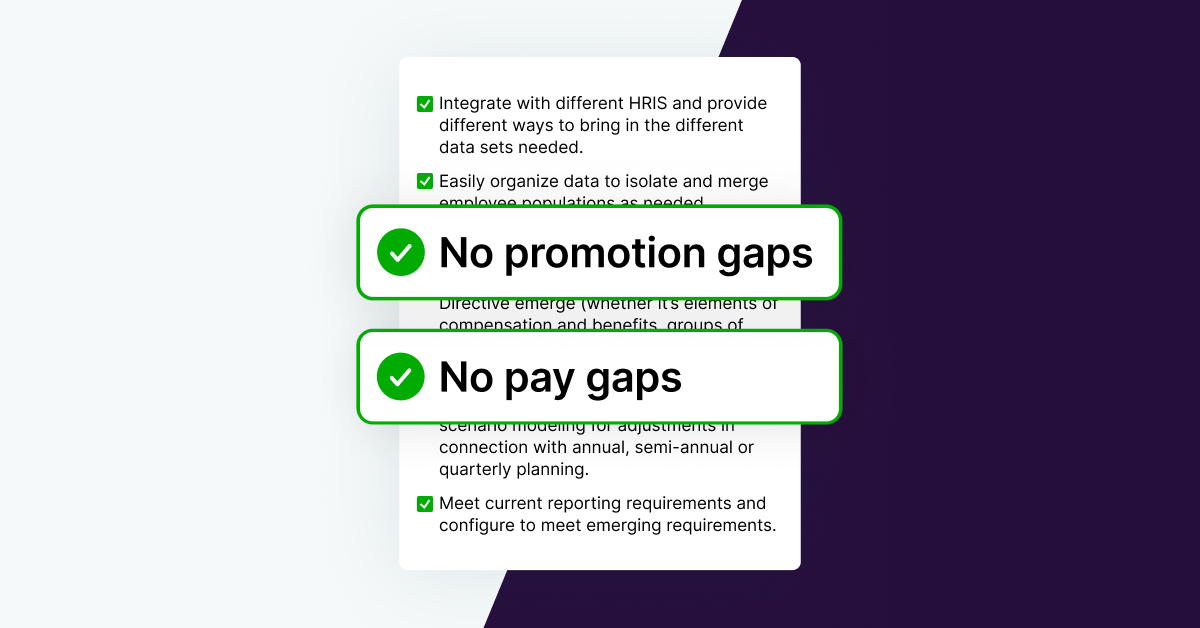Does the millennial pay gap for differ from the pay gap for baby boomers? Why is Gen Z the most open generation to pay transparency? While generational differences in the workforce are sometimes due to incumbent ages (e.g. Gen X earns more than Gen Z with larger gender pay gaps at least in part because they are in different career stages), some differences — such as views on the gender binary or systemic racism — shift meaningfully between generations. There is value in noting and understanding the broad characteristics of each cohort when strategizing how to build a workplace that attracts and retains talent of all ages.
Gen Z is set to be the most diverse generation yet, with a survey showing 47% of Gen Z employees identifying as BIPOC, compared to 39% of millennial workers, 34% of Gen X workers, and 25% of the baby boomer workforce. In addition to differing demographics, there are distinctions between generational cohorts in their perspectives on workplace equity-related issues.
First let’s dissect some of the context for each generation’s employment concerns and priorities, then we’ll take a look at stats demonstrating the differences between their attitudes towards, and outcomes for, workplace equity issues.
Generational employment concerns and priorities
Baby boomers (born between 1946 and 1964)
In 2022, baby boomers are between ages 58 and 76 and are starting to retire or are retired, representing 25% of the U.S. workforce. In the workplace, baby boomers are defined by their propensity to stay at the same job for a long period of time — 41% of U.S. baby boomers stayed with their employer for more than 20 years, with 18% having stayed at least 30 years. A full 90% of baby boomers at great workplaces intend to work at their jobs for a long time.
A survey of global executives found that 55% believe baby boomers are willing to work longer hours than other generations and 31% felt they needed less feedback than millennials or Gen X employees. Baby boomers are motivated by the “opportunity to make an impact on the business.”
Despite nearing or reaching retirement age, there is a growing trend among baby boomers to delay retirement or to move into semi-retirement. The majority of baby boomers are still working, and the oldest are staying in the workforce at higher rates than previous generations. In fact, 79% of workers between 57 and 75 years say they would rather be semi-retired than leave the workforce entirely.
This decision is often driven by financial insecurity — nearly two-thirds of baby boomers are concerned about having enough savings to quit working and more than two out of 10 baby boomers said the pandemic caused them to delay retirement because it made them feel less financially secure.
Gen X (born between 1965 and 1980)
In 2022, Gen X workers are between ages 42 and 57, representing 33% of the U.S. workforce. Sandwiched between the two largest generations — baby boomers and millennials — Gen X has often been overlooked in media analysis and comparisons. In fact, only half of GenX rated their own generation as “unique” (compared to 61% of millennials and 58% of baby boomers).
Currently in their prime earning years, Gen X is stepping into leadership roles in the workforce, holding 51% leadership positions globally in 2018. However, while Gen Xers make the most money, they also have the most debt of any generation and have above-average household sizes, often dealing with taking care of children as well as aging parents. In fact, 47% of adults in their 40s and 50s have an elderly parent and are either raising a child or financially supporting a child beyond age 18.
Known as “entrepreneurial” and “self-reliant,” GenXers make up 55% of startup founders. Having adapted to the Internet revolution, 54% of Gen X respondents feel they are digitally savvy, which is similar to millennials’ digital comfort at 56%.
Like baby boomers, Gen X are more likely to stay at their jobs longer; only 14% of Gen Xers have considered leaving their job during the Great Resignation (similar to baby boomers at 13%), while 31% of Gen Z and 27% of millennials were likely to quit. Along with baby boomers, Gen Xers were less likely than younger generations to have moved during the pandemic and have shown more resiliency when adapting to remote work than millennials.
Stability is important to Gen X as they reach the age when worries about retirement peak — 41% of Gen Xers are afraid of outliving their money and three in ten have said the pandemic has severely impacted their retirement planning.
Millennials (born between 1981 and 1996)
In 2022, millennials are between ages 26 and 41, representing 35% of the U.S. workforce. One of the defining characteristics of millennials in the workforce is their reputation for changing jobs frequently. Over half of millennials are considering changing jobs in the next year. They are overall less engaged at work than baby boomers or Gen X, and 43% of millennials say they recently left a job because of burnout.
What are millennials looking for in a job? Work-life balance, learning and development, and a high salary topped the list. One of the driving factors behind their search for jobs with financial benefits is that millennials are dealing with a lower level of wealth for their age than previous generations, earning 20% less overall than baby boomers did at the same stage of life and holding 41% less average wealth in 2016 than those who were at a similar age in 1989. This is leading millennials to seek alternative income streams, with 67% of millennial workers considering earning extra income via a side hustle in the next year.
The top two concerns for millennials in 2022 are cost of living and climate change. Almost half of millennials are working paycheck to paycheck and 29% don’t feel financially secure. Many millennials are struggling with student loan debt and difficulties getting into the housing market. In fact, 14.8 million millennials have student loan debt — more than any other generation — with 36% saying student loan debt is holding them back from home ownership. And 68% of millennials with student loan debt have delayed a major financial decision as a result of their debt (compared to 54% of Gen X borrowers and 42% of baby boomer borrowers).
Millennial workers are also driven by the search for meaning and purpose in their careers. When millennials believe their work has meaning, they are three times more likely to stay at their job and they are four times more likely to endorse their company if they feel proud to say they work there.
Gen Z (born between 1997 and 2012)
In 2022, Gen Zers are between ages 10 and 25. The oldest Gen Zers are just entering the labor market, representing 5% of the U.S. workforce. Gen Z is the most racially and ethnically diverse generation, as well as the most educated. They are also comfortable challenging gender binaries — 50% of Gen Z think the gender binary is outdated and, globally, Gen Z is 4 times more likely to identify as transgender, nonbinary, gender-nonconforming, or gender-fluid than people over age 40.
Gen Zers are more aware than older generations of issues like systemic racism and intersectionality. Gen Z is also defined by their status as the first “true digital natives”, having grown up with the Internet, social media, and smartphones. In fact, 98% of Gen Zers own a smartphone which they use to spend over 4 hours a day online.
In the workplace, Gen Z as a whole has embraced the remote work paradigm resulting from the pandemic. 77% of Gen Z workers are likely to engage with a job listing on LinkedIn if it mentions “flexibility” (compared to just 30% of millennials and other generations) and over half of Gen Z hybrid workers are relocating due to the ability to work remotely (compared to 38% overall). But Gen Z still wants connection in the workplace — 40% of Gen Z wants to interact with their manager daily or more frequently.
Support for mental health and wellbeing is also important to Gen Z, especially in the wake of the COVID-19 pandemic. Gen Z reports the worst COVID employment experience of any generation and was hardest hit professionally by the pandemic. Gen Z were the most likely generation to say that their mental health has worsened during the pandemic. Gen Z is also stressed about finances and the cost of living — 29% of Gen Z rated cost of living as their highest concern and 19% said mental health. 46% of Gen Z are worried about covering their day-to-day expenses and 30% don’t feel financially secure.
Generational workplace equity perspectives and outcomes
The pay gap
In the U.S., the national gender pay gap is narrower among younger workers: women under 30 working full-time earn about 93 cents for every dollar earned by men in the same age range, compared to 82 cents earned by all women for every dollar earned by all men. And in 22 of 250 U.S. cities in 2022, women under the age of 30 earn the same or more than male counterparts.
However, historical trends indicate that wage parity tends to peak during employees’ early years in the labor market and that women’s pay gap compared to men the same age widens as women grow older, even as the overall pay gap for all women has narrowed slightly over time. For example, Pew Research analysis of government data shows that women aged 16 to 29 in 2000 earned 88% of their male counterparts, but by 2019, these women (by then aged between 35 and 48) were only earning 80% of what men their age were earning. The gender pay gap seems to be widest for women between 57 and 58 years old, at which ages women earn only 74.2% of the median male income.
This trend can also be found in the UK, for which data shows that UK Gen Zers entering the workforce are close to gender pay parity, but that women over 40 are paid 10% less than men of the same age.
Additionally, while wages decrease for both men and women as they age, the age pay gap is wider for women. Men’s pay typically doesn’t start to decrease until over the age of 65 (an age at which many people retire), while women’s median earnings decline over the age of 55.
Pay transparency
Norms are changing around pay transparency. The younger a worker is, the more likely they are to embrace the concept of pay transparency, while baby boomers are especially resistant to and uncomfortable with the idea of sharing their pay history.
- 81% of Gen Z and 75% of millennials believe that pay transparency can lead to improved pay equity, while only 47% of Gen X and just 28% of baby boomers support pay transparency.
- 32% of Gen Z workers and 24% of millennials would be comfortable sharing pay information with a coworker, while 17% of Gen X workers and only 9% of baby boomers would be willing to.
- 34% of Gen Z workers would be willing to share their pay information with anyone, compared to only 4% of baby boomers. In contrast, a quarter of baby boomer workers would not be willing to share pay information with anyone at all vs. only 4% of Gen Z workers.
- 70% of Gen Z employees would consider switching jobs for more pay transparency.
- 67% of Gen Z students say that showing salary ranges in a job posting is the most compelling factor to cause them to apply.
Representation and DE&I
Younger generations generally value diversity, equity, and inclusion in the workplace more than older generations, being more likely to work for, more engaged at, and more likely to stay at companies committed to DE&I. They also think about diversity differently; according to a Deloitte report, millennials are more likely to frame diversity in terms of blending unique perspectives, backgrounds, experiences, and insights within a team to better achieve business goals, while older generations identify with the traditional definition of diversity as “demographics, equal opportunity, and representation of identifiable demographic characteristics.”
- 53% of Gen Z workers say they would not apply to a job or internship with a company that lacks diversity.
- 65% of Gen Z women look for women in leadership roles before applying to a company.
- 83% of millennials are more actively engaged and 76% feel more empowered when they believe their company fosters an inclusive work culture.
- 75% of Gen Z women and 66% of Gen Z men say they are more likely to work for a company that has demonstrated its commitment to a diverse, inclusive and equitable workforce.
- 69% millennials are more likely to want to stay 5+ years at a company perceived to have a diverse workforce than for one not perceived to be diverse.
- Gen Z employees were more likely than other generations to say they’d look for a new job if they found out their company lacked a DE&I policy.
- Equal opportunities for career advancement was the second second-most common gender-related career concern for female Gen Z students.
Expectations for equal pay
Equal pay is especially important to Gen Z, as they are more likely than other generations to apply to a company that commits to equal pay and more likely to leave a job if they were to find out their company lacked a pay equity policy. Pay equity is the most common gender-related concern for female Gen Z students — but they are also more optimistic than older generations that gender equality will improve.
- 62% of Gen Z overall (and 69% of Gen Z women) said they’d be more likely to apply to a company if it had a commitment to pay equity.
- Gen Z employees are more likely than other generations to say they’d look for a new job if they found out their current company lacked a gender pay equity policy.
- 36% of Gen Z women believe gender equality in the workplace will improve in the future, compared to only 25% of millennials and 29% of baby boomers.
Perceptions of fairness in compensation
Millennials are the most likely generation to feel they are not receiving fair pay or a fair share of profits. This perception may be in part because, as stated above, millennials overall earn 20% less than baby boomers did at the same stage of life, despite having higher education levels. This places them at a lower trajectory for accumulating wealth, as they are not only delaying home ownership, but many are still paying off student loan debt.
- Millennial workers are less likely than other generations to feel that they receive a fair share of profits.
- Millennials and Gen Z have a lower perception of receiving fair pay than older generations, with 71% of millennial and Gen Z workers saying “I get paid fairly” compared to 78% of Gen X and 79% of baby boomers.
- Millennials are more likely than Gen X or baby boomers to reject a low salary offer.
Equity for every generation
While most pay equity analyses run by companies focus on gender and race, age can be a valuable protected category to analyze as well. While it is illegal to discriminate against job applicants or employees due to age, 90% of U.S. workers say that age discrimination is somewhat or very common and 44% of older job applicants report being asked for age-related information during the hiring process. A Workplace Equity Platform can help your company run pay equity analyses on any protected category, including age, to ensure fair pay across all generational cohorts of your employees.
Furthermore, as discussed above, younger generations are making DE&I, pay equity, and pay transparency part of their job search criteria. Companies that can communicate their commitment to workplace equity through data-backed action can boost their employer reputation to help drive recruiting, hiring, and retention.
Want to see how leading companies are communicating about workplace equity? Check out our Workplace Equity Lookbook below.



